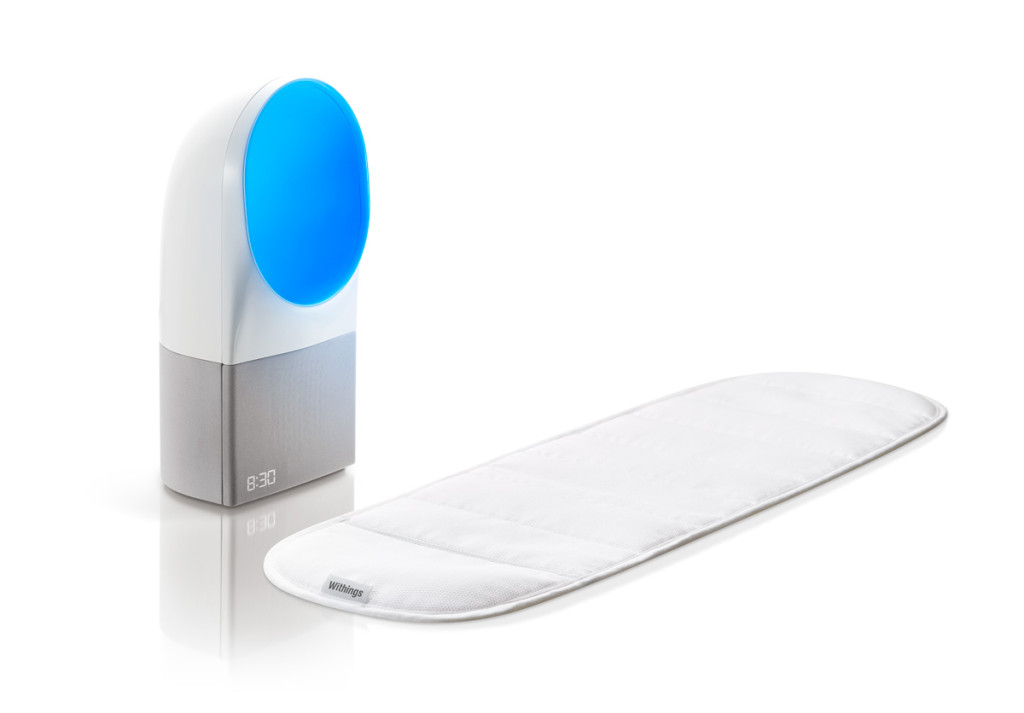There are a number of sleep-tracking gadgets out there, but they tend to require the user to wear a wristband,  headband, or some other little doodad —for trouble sleepers, this could contribute to the prob- lem! Withings has a head-slappingly simple solution: Make the device soft and flat and put it in the bed itself. After all, that’s where you sleep, right?
headband, or some other little doodad —for trouble sleepers, this could contribute to the prob- lem! Withings has a head-slappingly simple solution: Make the device soft and flat and put it in the bed itself. After all, that’s where you sleep, right?
The company’s Aura device consists of a mattress pad and a bedside light/clock/sensor combo. The pad is about as big as a hand towel and is as thick and soft as a quilt. It actually inflates a small amount, using changes in the air pressure to detect your movements, breathing patterns and heart rate.
Meanwhile, on your bedside table, a thing looking rather like a kind of blowhorn monitors the room’s ambient light, noise and temperature. It uses a customizable noise generator to help you fall asleep, then picks a good time to wake you based on your sleep rhythms; sometimes waking up 10 minutes earlier is actually a good thing.
The bedside gadget also — though these claims should be tak- en with a grain of salt — produces light in a  wavelength With- ings says causes your body to produce more melatonin. That’s a hormone involved with the sleep-wake cycle — but whether a bit of ambient light will really contribute to your sleep quality’s bottom line is perhaps something you’ll have to verify yourself.
wavelength With- ings says causes your body to produce more melatonin. That’s a hormone involved with the sleep-wake cycle — but whether a bit of ambient light will really contribute to your sleep quality’s bottom line is perhaps something you’ll have to verify yourself.
All of this information is available for you to peruse in a smart- phone app, of course, which will even use info from other fit- ness tracking devices to help determine the best sleep prac- tices.
At $299, the Aura is more expensive than devices like the Lark or Fitbit, both of which offer sleep-tracking capabilities, but it also does more — and you can’t exactly forget to put it on when you go to bed. You’ll be able to pick one up this spring.
Withings showed off the Aura at the Consumer Electronics Show (CES) in Las Vegas.
